Part 2: Heroes, Sidekicks & Villains: Who cares what these guys do anyway?
At the heart of every series is a character (sometimes more than one) that keeps people coming back. It’s the hero they root for, the villain they love to hate, or the sidekick whose loyalty and devotion bring tears to the eyes.
Sure, nobody wants the world destroyed (“Egads, I hope not! That’s where I keep all my stuff!”). But if we don’t care about the hero, we’re not going to read long enough to see if and how he saves it. And if the hero is truly unlikeable, we may KEEP reading, just on the off chance that the villain will win the day and shoot the hero in the face hole. Not good.
So, what are some things to consider when crafting the perfect hero, the most diabolical villain, or the stalwart sidekick, and how do you get them to keep bringing people back, book after book after book?
Heroes:
The hero is where you spend most of your time, usually. Whether you get your story idea from a stray thought of a world full of marshmallow furniture, or you see a tall, furry figure in a black duster and spurs in a dream, you will ultimately have to decide on your main character, your protagonist, your hero. You will know him inside and out, down to what kind of underwear he likes, and whether or not he takes his latte with half caf and foam. So what’s the key to a good hero?
First off, your perfect hero should be imperfect. I’ll give you a few moments to wrap your head around that one.
Who wants to read a story about a hero whose hair is always coiffed, his smile is always sparkly, his boots are never muddy, and he calls his mother every night at 6 on the dot? For comic effect, it might be good, but outside of satire/parody, it’s booooring!
We want our heroes to be human! (or, in the case of Jorge, a psychotic zombie marmoset) They make mistakes, just like we do. They have problems talking to the opposite sex, they get parking tickets, and they have a rash they don’t want to tell their doctor about.
Why does this keep us reading? Because there is the hope of change! Whether it’s through one book, or twenty, a hero shouldn’t be a static figure. And if Jorge can learn to love again after what that witch, Denise, did to him, then by golly, there’s hope for all of us! Just turn the page!
Longer series offer more chances for elaborate character development. It gives the author extra chances to beat the hero down and help them back up again. (Trade secret: Authors are almost all, at heart, sadists. True story.) But that doesn’t mean that a hero can’t change in the course of even one book. It just has to be handled quicker.
If, after three or four books, your hero is still making the same mistakes, going on the same bad blind dates, and hasn’t learned to wash his own laundry? Then your readers will be in danger of moving on, and finding someone who can.
And remember, children, if you kill ‘em, they won’t learn nuthin’!
Villains:
Bear with me while I reveal just how big a geek I am. Once upon a time, me and some fellow gamers were playing AD&D. Y’know, the one with the dice. Yes, I was one of those people. (still am, if I could find a good group again)
We were starting off on our first mission with our low-level characters, and we encountered a Very Bad Person in the middle of the road. This Very Bad Person was a lich (an undead thingy) who was intended to be our Big Bad for the run of this campaign. He was just appearing now, so our characters would know who they were up against, down the line.
In our group, we had a little paladin. Paladin tells our GM “I’d like to turn the lich.” Now, at our level, this was going to be impossible. The GM smirks and says “Ok. Roll a natural 20.” Impossible. Unheard of!
Die goes plop. GM goes “Shit!” And our Big Bad villain goes bye-bye. Our gaming session was over that night, because the GM had no idea what else to do with us, now that we’d dismantled his entire plot.
All of this is just to illustrate that your villains are important. Whether you are doing an episodic series with a monster-of-the-week, an epic trilogy to save the world from certain DOOM, or an episodic meta-plot where the weekly monster is being run by Big Evil Global Conspiracy, the villains are important.
First and foremost, they have to be believable. If your monster is a huge mound of sentient salt, you’d better have a damn good reason why a bucket of water wouldn’t just end the whole problem right there. If you have a rampaging warlock in a world with no magic, there better be an explanation.
A subset to this (and possibly even more important) is that they have to have a believable motivation. Jorge’s arch-nemesis, Mongo the Luna Moth, wants to take over the world. Well, ok, why? What IS it about the world that they don’t like or they think they can do differently? Very few good villains are evil for evil’s sake. Some of the best villains completely believe they are doing the right thing. The road to Hell is paved with Nutella…er…good intentions.
The villain has to offer a plausible threat. Threats to turn your hero’s hair blue isn’t really something that’s going to make me turn the page to see what happens next. Threatening to overload a nuclear reactor suspiciously located beneath the daycare your hero’s one and only child is attending? THAT’s a good threat. We fear, not only for the child, but for our hero should something happen to his beloved spawn.
The villain MUST have longevity. In a single book (episodic series), the hero should encounter the villain a few times, even if he (and the reader) doesn’t know it. Scooby-doo endings work (“It’s Mr. Withers who owns the abandoned amusement park!”), because the clues are all there if we care to look. Having the bad guy at the end be some random dude we’ve never seen before is just…lame.
In a meta-plot book, the Big Bad needs to be just that. By the end of the series, we should be absolutely petrified, fearing there is NO way our hero is going to triumph. If he’s conquered everything else up to this point, then whatever’s waiting at the end had better be worth it. Finding out the Big Bad is just an über-intelligent cockroach with a talent for ventriloquism (*stomp, squish*) is anti-climactic in the worst possible way. As a writer, you may think it’s clever, but as a reader, I promise you someone will hunt you down and bludgeon you with your own book (or books, if you’ve spent 15 of them building up to that point).
Sidekicks:
Remember, when you think you can’t torture your hero any more, you can always torture his friends/family/lovers/mailman/gardener. They’re your comic relief, your moral compass, and your cannon fodder. They provide motivation for your hero, a living shield for your villain, and they never ask for a word of thanks. They’re your sidekicks.
For my purposes, we’re going to designate all supporting characters as “sidekicks.” Mostly, ‘cause typing sidekicks is easer than “supporting characters”.
I fully admit that there is at least one series that I continue to read, merely for the sidekicks. In other series, while my heart always belongs to the hero, I might cheat on him a little with one of his close friends. We love them, we hurt for them, and when we lose one of them in the requisite ultimate sacrifice, we stand next to the hero at the grave and weep quietly with him.
The sidekick serves many purposes, a few of which I mentioned just above. Often, they serve as a substitute for the reader. I mean, who hasn’t imagined themselves as one of the Doctor’s companions, when watching Doctor Who? They are our way of insinuating ourselves into this new and wondrous world. Sometimes, they are learning about it (from the hero) and this is how we become acquainted with the rules. Sometimes, they are the mentor, the teacher, and we sit next to the hero in his lessons.
They also serve as a measuring stick to view your hero against. They can be the kind heart that your hero wishes he had, the disciplined warrior he wants to be, the unforgiving taskmaster he never wants to turn into. By seeing how he interacts with those around him, we are able to create a three-dimensional view of the hero. Therefore, he has to have three-dimensional people to relate to.
Your sidekicks, the ones that are going to have the greatest impact on your hero’s life, should get at least as much planning as your hero. Who are they? How do they feel about your hero? Were they always friends? What are their dreams, not only for the hero, but for themselves? How do those two things mesh (or collide)? These people do not exist in a vacuum, and unless you’re working on some kind of really interesting sci-fi epic, their universe does NOT revolve around your hero.
By making them as real as possible, it will be easy for the reader to understand why the hero values them so. And their value should be readily apparent.
Jorge has a best friend, Urk the Clam. Jorge and Urk have known each other for years, grown up together. Urk once saved Jorge from a runaway zamboni.
Now, I can kill Urk off on the first page of the book, and if that’s what the story is about, it can provide some good motivation, set the story in motion, get the plot moving. The disadvantage being that the reader won’t know Urk, and will only learn of his value to Jorge in retrospect. He doesn’t mean anything to the reader.
However, if I spend two books showing how the two interact together – Urk picked Jorge up after Denise dumped him, let him sleep on the couch. Jorge stepped up to be best man at Urk’s wedding, when none of Urk’s family would even show (they didn’t like the bride, they were anti-flamingo) . And neither of them talk about that drunk weekend in Vegas. – then when Urk steps in front of that second speeding zamboni and goes to the big ice rink in the sky, we’re gonna feel that hurt right alongside Jorge.
(If you can’t tell, the sidekicks are some of my favorite non-existent people)
And this means what, exactly?
This means you should never dismiss the emotional impact a hero, a sidekick, or a villain can have on a reader. Two of the most gut-wrenching moments for me, in recent Dresden Files novels, came when I feared that Butcher had killed off a couple of the “sidekicks” that I dearly love. I not only grieved for their potential loss, but I was bracing myself for the impact that loss would have on the hero, Harry. Would this be the thing that finally broke him? I had to keep reading to find out!
Your characters are your tools, make sure they’re sharp and shiny. People like shiny things.
Coming soon: Part 3: Pacing and Flow: Zoom, rawr!
Wednesday, August 26, 2009
Subscribe to:
Post Comments (Atom)


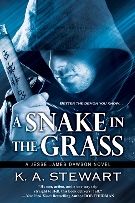
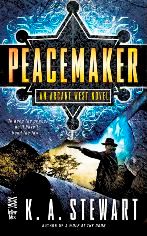
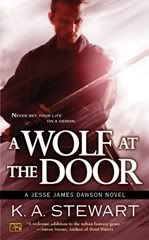
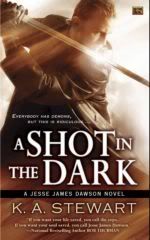
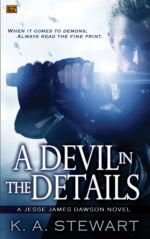
6 comments:
I have to ask, are you keeping track of Jorge and his wacky cast of characters for this series. *grin*
Have you MET me? I have a vague plot outlined.
You bring up an excellent point that a villian has to have a believable motivation. It's all too easy to write cliche bad guys who just want to take over the world, well, just because they want to. There is nothing more boring than a cartoon villain. Why did Snidely Whiplash always tie Nell up to the railroad tracks, anyway?
You know, now that you mention it, I'd kinda like to see a psychologist's analysis of ol' Snidely.
My heroes come off as to damned perfect in the first draft. Sure they got motivations but they are so good at represing their emotional baggage that you don't care that they don't seem to care.
As for villains, is it okay to kill the first villain off to set up a bigger villain later?
Cause I did that. I think it worked, I think.
I think killing a villain (one the reader ~thought~ was the Big Bad) is a good tool. Nothing like lulling a hero into a false sense of security, then hitting them with a mack truck. See? Authors are all sadists.
Post a Comment